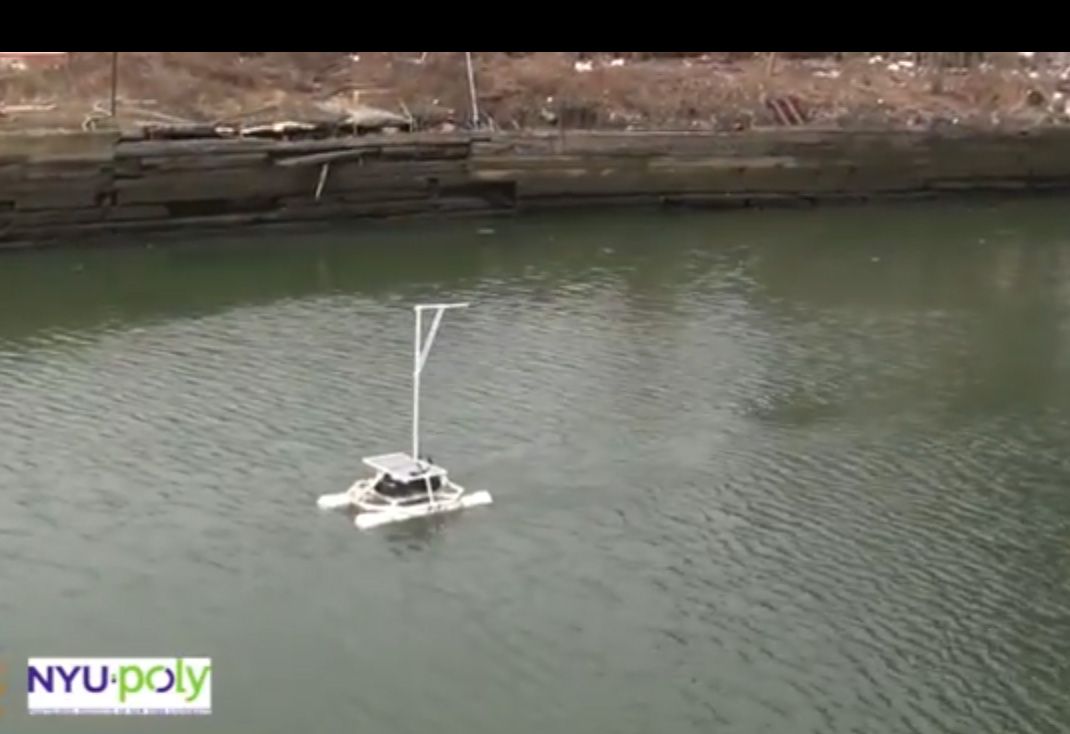Can a Floating Robot Save a Polluted Canal?

Pity the Gowanus Canal. A forgotten relic of Brooklyn's industrial past, the garbage-choked waterway is now home to a putrid stew of toxic waste.
Where barges once served tanneries and paper mills, all that remains today are high levels of mercury, lead, raw sewage, cancer-causing polychlorinated biphenyls (PCBs) and other pollutants.
The Gowanus Canal achieved further notoriety in January 2013 when an adult dolphin chose the canal's oily waters as a place to die. A necropsy revealed the dolphin had numerous pre-existing ailments, but the event did nothing to enhance the canal's reputation. [10 Most Endangered US Rivers: 2013]
Help for the beleaguered canal, however, has arrived in an unusual form: a floating robot.
The Brooklyn Atlantis project, spearheaded by Oded Nov, assistant professor at the department of technology management and innovation at the Polytechnic Institute of New York University, has created an aquatic robotic vehicle (ARV) that collects environmental data on the Gowanus Canal.
The team's ARV, roughly the size of a storage trunk, gathers water-quality data such as temperature, pH (how basic or acidic the water is), dissolved oxygen and other information. It also houses two cameras — one underwater, one above — to record conditions at the canal.
"The Atlantis robot was designed specifically for the Gowanus Canal," Nov told LiveScience. "We needed to design a robot that is capable of withstanding brackish water mixed with sewage and other contaminants, while also being easy to deploy and maintain."
Sign up for the Live Science daily newsletter now
Get the world’s most fascinating discoveries delivered straight to your inbox.
The Gowanus Canal, a 1.8-mile (2.9 kilometers) inlet at the upper end of New York Harbor, was recently declared a Superfund cleanup site by the Environmental Protection Agency. The agency has proposed a plan to dredge and restore the channel by 2022.
Nov's academic interests extend beyond environmental technology, however. He and his students are researching how environmental data can be gathered and analyzed at the intersection of science and social media using "citizen-scientists."
For example, the Brooklyn Atlantis project encourages interested volunteers from the local community to go online and tag or describe the images collected by the ARV.
Citizen-scientists have been used with some success to monitor osprey health, track ladybug populations and search for distant galaxies.
"Brooklyn Atlantis is providing us with insight on the dynamics of volunteers' motivations, and how we can design peer-production systems to garner and retain the most user participation," Nov said. "The combination of the robot and the online citizen-science environment enables us to study such questions."
Follow us @livescience, Facebook & Google+. Original article on LiveScience.com.











